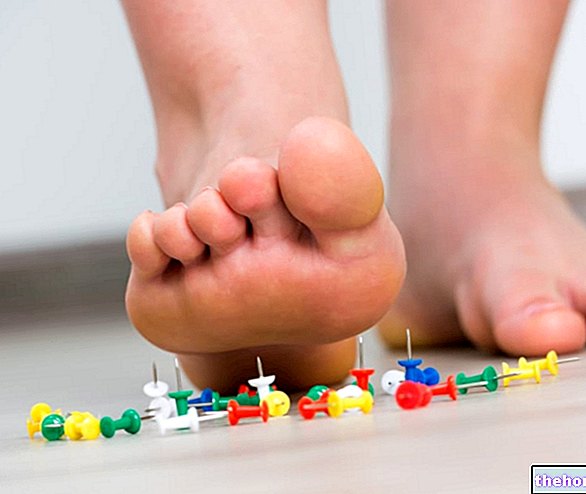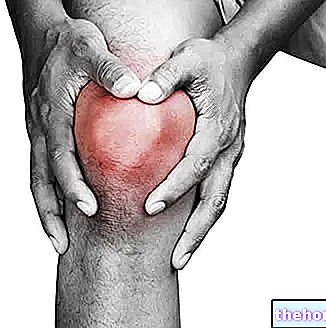
Symptoms are similar to those generated by other conditions that evolve into sciatica, such as herniated disc; however, piriformis syndrome does NOT refer to problems with spinal nerve roots and / or compression of an intervertebral disc.
The involvement of the sciatic nerve, in fact, occurs a little further from its origin, precisely at the level of the buttock, where it becomes trapped due to alterations of the piriformis muscle. This can cause pain often perceived as a tingling or a feeling of numbness. which involves the lower part of the body and runs along the leg, radiating from the buttock to the foot.
The pain may worsen during daily activities such as climbing stairs, walking, running, or after sitting for long periods of time. Piriformis syndrome is often confused with a lumbar disc problem, as the symptoms are similar to sciatic nerve root irritation.
Piriformis syndrome can be caused by several causes, which include anatomical changes in the muscle-nerve relationship or trauma to the gluteal region, such as a car accident or a fall.
There is no immediate test to make a diagnosis. The condition is mainly defined on the basis of the symptoms that the patient has and on the physical examination, after the exclusion of other possible causes.
In general, the therapeutic approach to the disorder begins with physical exercises and stretching, which allow the rehabilitation of movement. Most treatments are aimed at reducing the pressure exerted by the piriformis muscle on the sciatic nerve.
To control local pain and inflammation, analgesic and anti-inflammatory drugs may be prescribed; a local injection of corticosteroids can provide temporary relief. In some cases, surgery is recommended.
.
The disorder typically causes spasms and pain in the buttock, but can also extend to the nearby sciatic nerve, causing numbness, weakness, and tingling along the back of the leg and in the foot (similar to sciatic pain caused by a slipped disc).
In general, conditions of this type are referred to as ENTRAPPING NEUROPATHIES.

Piriformis Muscle: Characteristics and Functions
The piriformis is a small, triangular-shaped muscle located deep in the buttock, behind the gluteus maximus.
The piriformis muscle:
- It originates from the inner surface of the sacrum and is inserted into the ipsilateral femur;
- It is classified among the external muscles of the hip (group of the external rotators of the hip);
- It is important to assist in the external / internal rotation of the hip, and to turn the leg and foot outward. In general, this muscle is important in the movement of the lower part of the body, as it stabilizes the hip joint and, by contracting, externally rotates the femur and allows you to walk, shift your weight from one foot to the other and maintain the hip. equilibrium;
- The sciatic nerve passes underneath the piriformis muscle, with which it is in close contact.
The exact causes of piriformis syndrome are unknown, but some hypotheses include:
- Spasm of the piriformis muscle or an adjacent structure, in response to a traumatic event or overexertion;
- Muscle abnormalities with hypertrophy;
- Nerve anomalies (partial or total);
- Lumbar hyperlordosis;
- Fibrosis (due to trauma);
- Pseudoaneurysms of the inferior gluteal artery;
- Excessive physical activity.
Each of these causes, or a combination of them, can affect the piriformis muscle (causing pain in the buttocks) and the adjacent sciatic nerve (causing pain, tingling, or numbness in the back of the thigh, calf, or foot).
Abuse injuries at the origin of piriformis syndrome can result from activities performed in a sitting position that involve heavy use of the legs, such as rowing or cycling.
Piriformis syndrome can also be caused by "excessive pronation of the foot, where the piriformis muscle contracts repeatedly, for a compensatory mechanism, with each step.
The result of the piriformis muscle spasm can affect not only the sciatic nerve, but also the pudendal nerve, which controls the muscles of the viscera and bladder. Symptoms of pudendal nerve entrapment include numbness and tingling in the groin area and can lead to urinary and fecal incontinence.
tingling, or numbness in the lower back, along the back of the thigh, calf, and foot (similar to sciatica);What Activities Can Exacerbate Pain?
Symptoms of piriformis syndrome often worsen during physical activities involving the piriformis muscle or after prolonged sitting, while they can improve with supine rest.
For further information: Symptoms Piriformis Syndrome: it is a sophisticated version of the magnetic resonance and allows to highlight the inflammation and the effects on the nerves involved.Some specialists believe that the most important criterion for diagnosis is the exclusion of sciatica resulting from compression / irritation of the spinal nerve roots. Piriformis syndrome, in fact, does not involve herniation of the discs.
However, the diagnosis of piriformis syndrome is based on a review of the patient's medical history, physical examination and some diagnostic tests.
Anamnesis
In the diagnostic process, the anamnesis includes a thorough examination of the symptoms reported by the patient, specifically investigating:
- What positions or activities relieve or worsen the pain
- The duration of the events;
- The possible association of the symptoms with a recent and previous injury.
Physical examination
Piriformis syndrome is often defined through a series of diagnostic tests that rule out other conditions that can cause similar symptoms in the patient, such as a lumbar disc herniation or sacroiliac dysfunction.
The visit includes an examination of the hip and legs to:
- Evaluate whether the movement causes exacerbation of pain in the back or lower limbs;
- Measure local pain and muscle strength.
Generally, the movement of the hip and the forced rotation of the extended thigh cause pain, while through a careful and deep palpation it is possible to detect a spasm of the piriformis muscle.

Diagnostic for Images
Traditional imaging tests cannot diagnose piriformis syndrome.
However, investigations such as computed tomography (CT) and magnetic resonance imaging (MRI) can be conducted to:
- Rule out other conditions responsible for similar symptoms;
- Detect if the sciatic nerve is compressed from other causes.
An "injection of anesthetic, with or without corticosteroids, can help confirm whether the piriformis muscle is the source of symptoms."
®), which can relieve muscle stiffness and compression of the sciatic nerve.A comprehensive approach to managing piriformis syndrome may include a combination of the following treatments.
Exercise, stretching and massage
Effective treatment includes stretching and strengthening the muscle groups affected by piriformis syndrome (gluteus medius, hip adductor and extensor muscles, etc.). Exercises that involve movements to stretch the piriformis muscle and decrease spasm can relieve painful symptoms. along the sciatic nerve and rehabilitate the patient in a few days.
Massage therapy, practiced by an expert, can help heal piriformis syndrome by increasing blood flow to the area and reducing muscle spasm.

Cold and hot compresses
When pain occurs, it is helpful to start by applying a cold pack to the painful area several times a day, for about 15 minutes at a time. Repeat as necessary every 2-4 hours, continuing until it benefits you, even for a couple of days.
Sometimes, it may be more useful to gently massage the area with an ice cube, especially if specific activities cause increased pain (if the ice is placed directly in contact with the skin, limit the application to 8-10 minutes to avoid cold burns).
The cold pack helps to alleviate the inflammation and muscle tension related to the piriformis syndrome, for a natural analgesic effect.
Once the acute pain has been relieved, it is good to try to relax the contracted muscles: in this case, heat (such as a hot water bottle) can be useful.
Some people with piriformis syndrome find it helpful to alternate between cold and hot packs.
Medicines
Non-steroidal anti-inflammatory drugs (NSAIDs), such as ibuprofen or naproxen, help relieve pain during the acute phase of piriformis syndrome and help reduce inflammation.
If the pain does not tend to improve, doctors may inject a corticosteroid drug directly into the piriformis muscle to reduce muscle spasm.
The purpose of a "local injection of drugs is to decrease acute pain to allow for progress in physical therapy."
For a persistent spasm of the piriformis muscle, resistant to treatment with analgesics and anti-inflammatories, it may be useful to resort to an injection of botulinum toxin, to help the muscle relax and help reduce pressure on the sciatic nerve.
Electrotherapy for Piriformis Syndrome
Transcutaneous electrical nerve stimulation (TENS) can help block pain and reduce muscle spasm associated with piriformis syndrome.




























